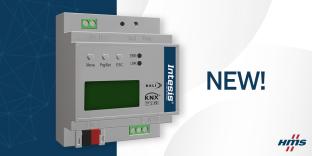The notion of the automated building has been around for over four decades, introducing systems capable of monitoring and managing resources such as energy and water usage. But the scope is now changing, with buildings becoming “smart” through the convergence of advanced building management systems and wide-scale industrial IoT.
The industry widely agrees that between 30% and 50% of energy supplied to buildings is wasted, often attributed to the inefficiencies inherent in heating or cooling unused rooms, or in supplying lighting to communal areas and offices that do not benefit from sufficient natural light throughout the day. So, the original rationale for smart buildings targeted the measurable objective of reducing energy consumption, showcasing a clear return on investment whilst demonstrating commitment to reducing environmental impact.
But today the focus is changing. Humans spend more than 80% of their lives indoors and there is widespread recognition that improvements in the working environment increases welfare which, if implemented effectively, translates into measurable productivity and efficiency gains across a company’s workforce. From “passive” to “active”, buildings are no longer considered as just a physical asset with an associated operating expenditure. The new generation of building IoT systems (BIOTs) have an increasingly active role to play, not just in energy efficiency and security, but now also dynamically enhancing space utilisation and improving the wellbeing of users.
The smart buildings industry has a massive market opportunity ahead of it. In 2020, only 17% of companies are presently operating smart building policies and, of these, 22% indicate they will increase the budget allocated to smart building technologies over the next three years. Security and access control are the primary focus for both large enterprises and small businesses, whereas medium-sized organisations place localised control of the environment – for example, meeting room temperature and lighting controls – as their top priority for smart building investment. Facilities management remains a fundamental element of smart buildings, with 53% of companies implementing heating and ventilation (HVAC) control and 43% having automated lighting systems as part of their smart building installation.
Most importantly, the workplace environment is changing. Indeed, workforces are more mobile than ever before due to the introduction of technologies such as fibre broadband and 5G mobile which enable remote working. By consequence, companies are reconsidering their space requirements, exploring alternatives to traditional rows of desks, including collaborative meeting spaces and huddle rooms. Here, the integration of meeting room booking systems with smart building automation significantly improves space utilisation and energy efficiency by actively managing room resources and the local environment.
The technologies employed in smart buildings are mature and highly reliable; often large and complex systems, these installations must continue to operate for several years with limited maintenance. Even today, the common approach is to use wired infrastructure. However, wireless alternatives are now starting to proliferate, especially in older building stock, where sympathetic retrofit is sometimes the only option for upgrade.
The wider consideration is how to make all buildings smart. Design-in for new builds is relatively easy yet retrofit remains a challenge, with companies only just beginning to realise the wider benefits. Futuresource expects new government initiatives will emerge that encourage a move to upgrade existing building stock, as it’s only through smart buildings that the broader smart city and wider environmental initiatives can be fully realised.














